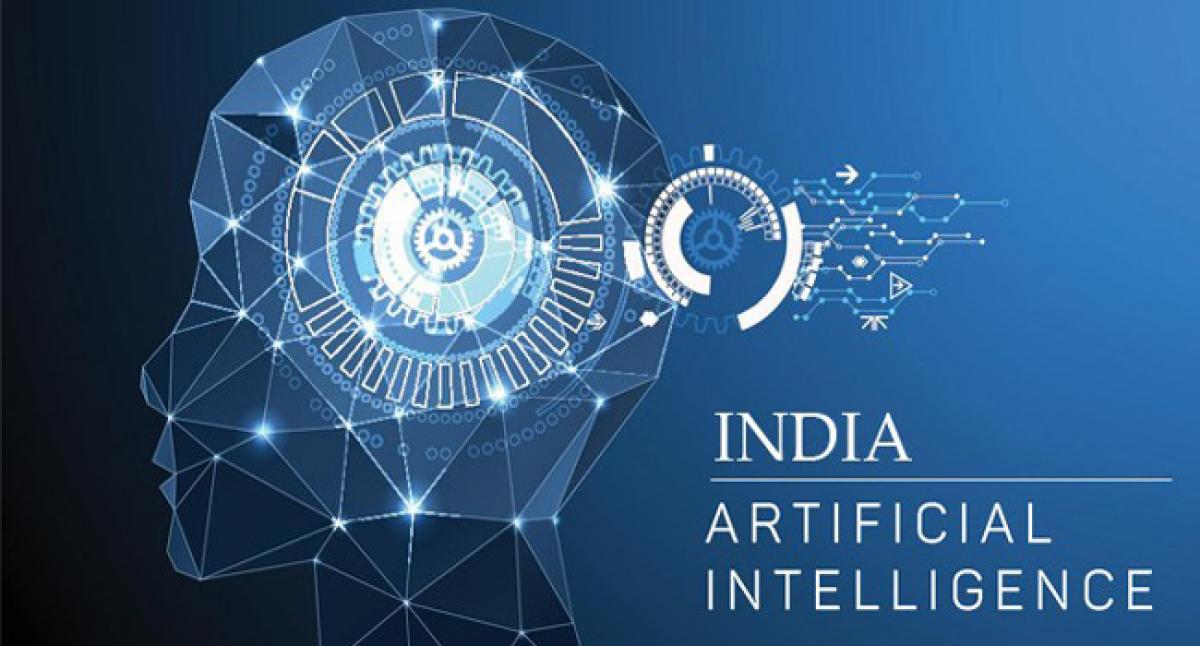Live
- BJP-JDS party workers believe Congress is the future: DKS
- Aishwarya Rai's Powerful Message Against Street Harassment: "My Body, My Worth"
- Pawan Kalyan to meet union minister in Delhi today to discuss AP issues
- Couple arrested for forcing Bangla girl into prostitution
- Grant allocation war erupts again in Congress
- PM to attend DGPs’ meet from Nov 29
- Tigress ‘Zeenat’ released into wild in Similipal
- Odisha police launch drive to eliminate ganja cultivation
- CM Mohan Charan Majhi disburses Subhadra money for 20 lakh women
- Ban orders in Jajpur
Just In

The current global economy is caught in a major paradox. We live in a world where systems using artificial intelligence (AI), robotics and automation are matching or exceeding human performance in more and more domains. Yet, global productivity levels have been stagnant since the economic crisis of 2008.
The current global economy is caught in a major paradox. We live in a world where systems using artificial intelligence (AI), robotics and automation are matching or exceeding human performance in more and more domains. Yet, global productivity levels have been stagnant since the economic crisis of 2008.
The global total factor productivity (TFP), which measures the efficiency with which inputs such as labour and capital are used, grew at 1.2 percent per year on an average between 1999 and 2008, slowed to 0.3 percent till 2012, and has stagnated since then.
For the advanced economies, including the US, Japan and the Euro-zone, TFP growth has either stagnated or fallen into negative territory while the developing countries have shown a mixed performance. India and China have experienced a TFP growth of one per cent and 0.8 per cent, respectively.
These trends are more problematic for the developing world than the advanced nations. As economist-columnist Paul Krugman aptly commented: "Productivity isn't everything, but in the long run it is almost everything."
However, it is almost inexplicable to experience such productivity trends in the face of rapid technological advancements. British economic journalist Martin Wolff recently suggested that the stagnation of productivity in the developed world could probably be a lull before the storm.
A similar productivity pause was seen in the US in the 1920s when electricity was revolutionising lives. Soon after the lull, productivity levels shot up rapidly. To make matters worse, the various channels of technology adoption are under threat these days.
There are three broad channels for knowledge and technology flows between advanced and emerging economies: International trade, foreign direct investment and cross-country research collaborations. However, in a post-Trump world, as countries close up their economies, these synergies can come to nought.
In such a scenario, the adoption of technologies could take a hit and the productivity disparities between advanced and emerging economies. The best way for these nations to climb up the ladder of prosperity would be to eliminate all structural impediments to the adoption and penetration of newer technologies.
The popular fear of job losses due to higher automation has also been negated by a recent analysis by the Asian Development Bank. In the light of these facts, the NITI Aayog's latest move to shift the policy focus on AI to stimulate social and inclusive growth is a positive step.
Such applications of digital technology can unleash higher levels of productivity gains and push the envelope on the delivery of public goods on a national scale. The real litmus test will be the execution of the policy, but for now it can be said that India has entered the AI playground at the perfect time. (The writer is Chair, Institute for Competitiveness).

© 2024 Hyderabad Media House Limited/The Hans India. All rights reserved. Powered by hocalwire.com







